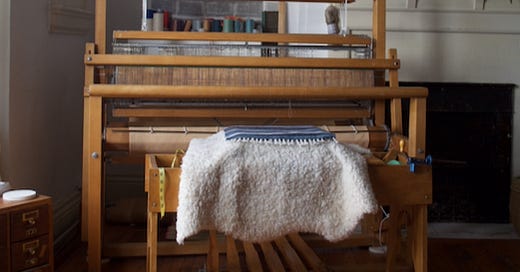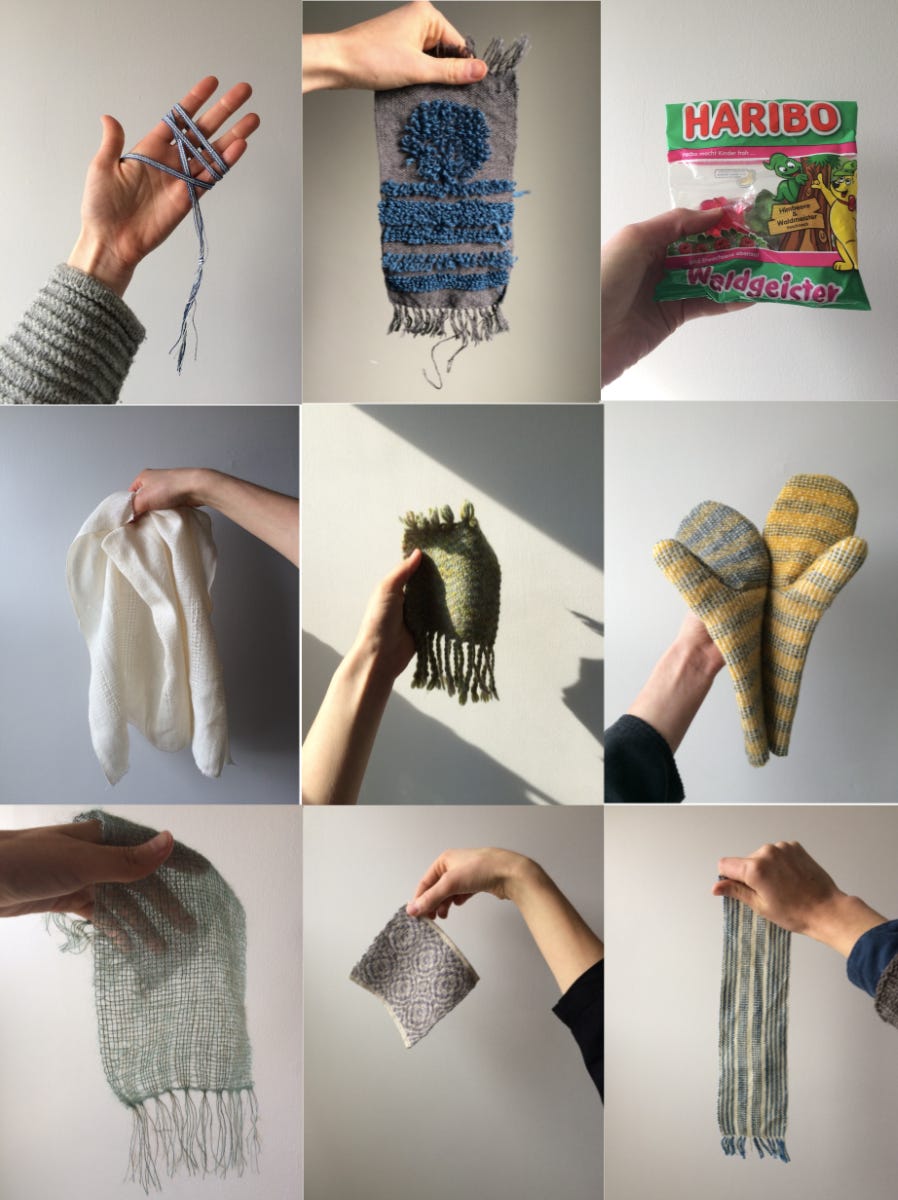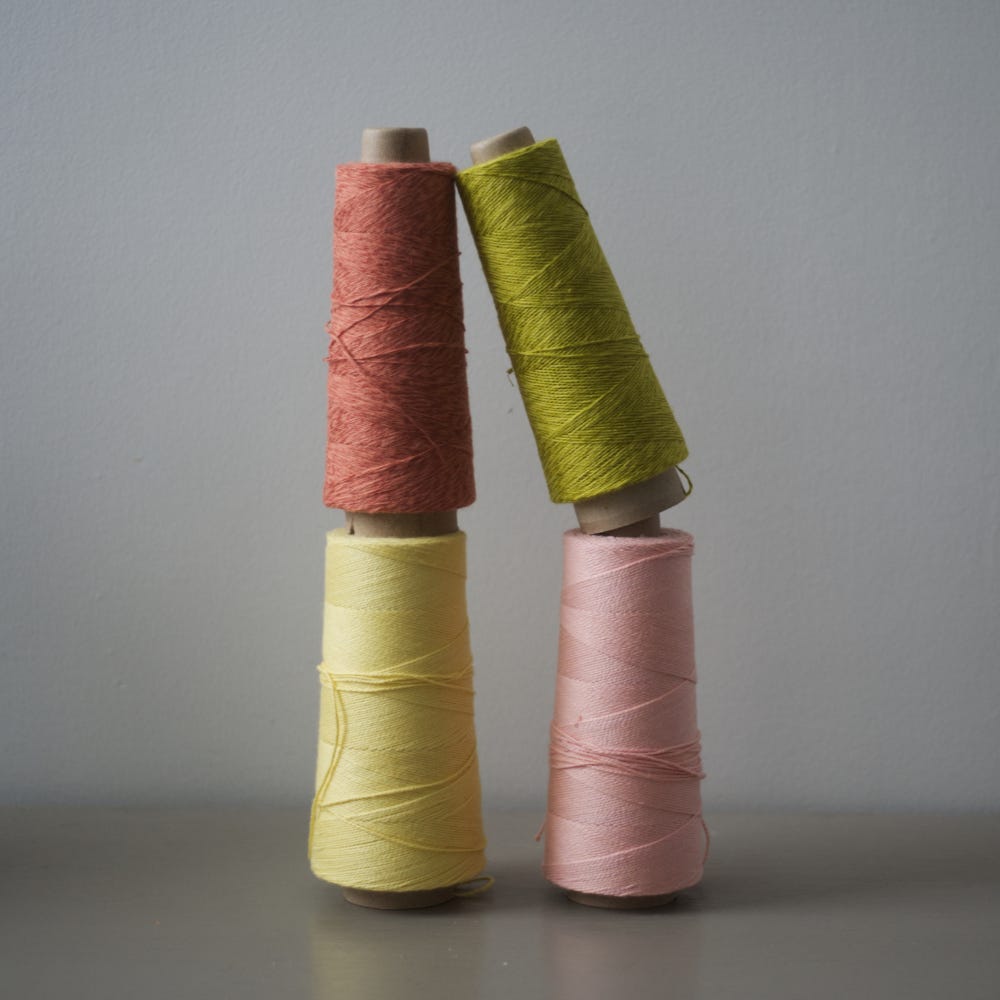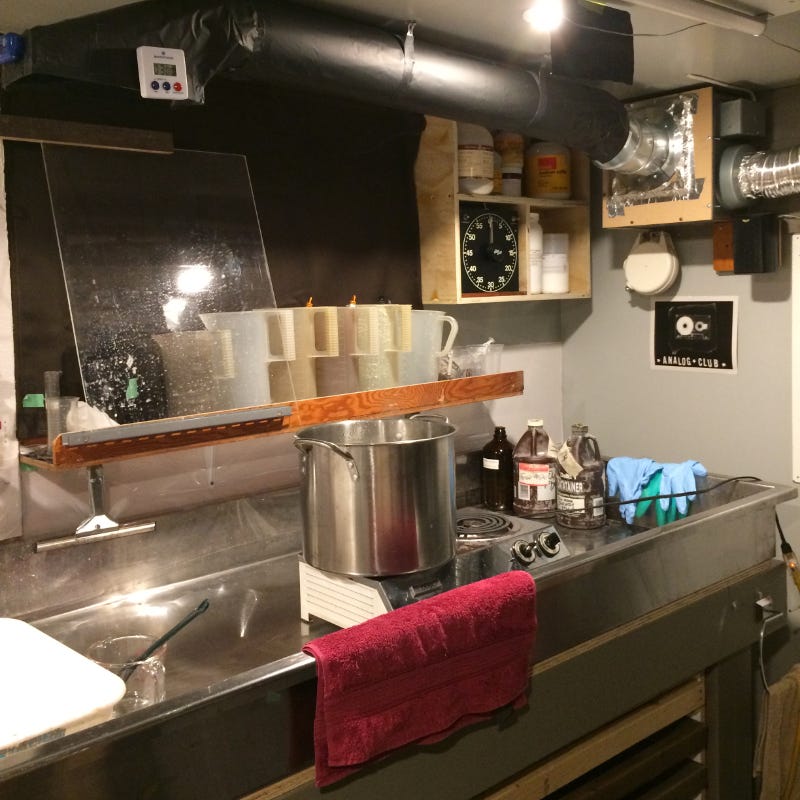In this newsletter you’ll find:
Loom for sale
History is Rarely Black or White
I take the same picture
Colour/color
Loom for Sale
My 45” LeClerc counterbalance loom is for sale. Fun story: it was my mum’s first floor loom — she bought it 15+ years ago from a lady on Ebay, who lived very near to where I do now in Hamilton. It’s come full circle and now it’s looking for a new weaver to love it.
This loom is great! I replaced the whole brake assembly 3 years ago so it’s got all brand new parts. There are a couple hundred metal heddles (I’m not counting them, sorry, but there’s at least 600-800), and it’s got strong, like-new aprons that my mum put on. It comes with lease sticks, a 10 and 12 dent reed, and a raddle, but no bench.
It’s time for this loom to move on — I held onto it for a while after getting my countermarch because I used it to sample (I am the queen of short sample warps), but getting a table loom last year made it redundant and it’s mostly served as a hanger for in-progress cloth ever since.
I am taking all fair offers for this loom — I do have a price in mind but I’m flexible and I’m more interested in seeing it go to a good home. However, you MUST be able to come to me to pick it up, I don’t drive :)
Interested? Send me an email (or reply this this newsletter).
History is Rarely Black or White
There is an exhibition I wish I could go and see at the Agnes Etherington Art Gallery in Kingston, Ontario that’s on right now.
History Is Rarely Black or White examines cotton garments in the Queen’s University Collection of Canadian Dress at Agnes from the late 1700s to the early 1900s through archival research, artistic intervention, and scientific enquiry. By the mid-1800s, the cotton industry comprised a complex, transnational network of industrialization, commerce and violence. The global thirst for cotton made the oppression of marginalized communities systemic, forever affecting generations.
This exhibition focuses on the humanity at the core of this brutal enterprise. Experts at the Facility for Isotope Research, Queen’s University, locate the point of origin of raw cotton used in garments displayed in this gallery. Archival tintypes and documents trace this journey into Canada, while works by artists Karin Jones, Damian Jöel, and Gordon Shadrach illuminate the ways in which the cotton trade’s problematic legacy is still with us today.
Lucky for me, there is a virtual walkthrough that I highly recommend that you visit. It’s easy to forget that the world was hyper-connected through trade long before the arrival of modern technologies like the internet or telephone, and I like how something that seems innocuous at face value (like a fussy Victorian woman’s dress) can tell a wide-reaching, complex story that still echos today. The Cotton and the Canadian Consumer section of the virtual exhibition is particularly enlightening.
On February 11th, I’ll be virtually attending the free speaker series Style as Armour: Identity, Clothing, and Self-Fashioning in History Is Rarely Black or White with Julie Crooks and Nigel Lezama — you can sign up here.
Photography Rule
When you find something that works, stick with it?
Colour/color
February is the start of a new short series for the Gist Yarn blog about colour! Once I had a customer come in to store I used to work at and she was literally there ALL DAY hemming and hawing about whether or not a certain colour of sock yarn was going to look good on her.
There is no reason to be this fussy or freaked out by colour! If you are known to hem and haw (I do too) or feel unsure about how to choose colours for your weaving projects, keep your eyes peeled around February 21st for the first of three articles about colour — there’s a pattern coming too!
(As an aside: I wrote my whole article using the variant American-English spelling of color, and now my fingers are very confused!!)
Mary recently emailed recently me to say she was planning on making some X and O Coasters in a red and white Valentines day theme. I thought this was a great idea and asked if I could share it in my newsletter in case anyone else would be similarly inspired — I can’t wait to see them pop up on her Instagram. Mary has a weaving blog and she’s posted a how-to on tying an old warp to a new warp — something I’ve never tried. She makes it look very easy!!
Also inspiring are Vivian’s gorgeous handspun versions. I love how the colour flows through these, but if you don’t spin, I suspect hand-dyed yarn will give you a similar effect. Vivian makes beautiful things, just look at this shirt from handspun and handwoven fabric!
These days I am patiently waiting to learn if I can start a project or not (one more month to wait!) and in the meantime I’m working on a handful of things, including scouring some cotton and linen in my partner’s darkroom. It’s handy, having a giant stainless sink in your house.
Be well,
amanda








